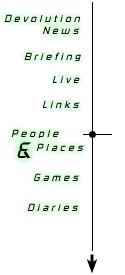
Wrexham
Electorate: 95,141Area (Hectares): 49,900
Wrexham lies in the north east of Wales, on the border with England. This was once a coal-mining and steel-making area, but the last steel plant was closed in May 1990. This economy is now dependent on inward investment projects. BICC, JCB Transmissions and British Tissues all have plants here. Although there is a large concentration of manufacturing industry in and around the town of Wrexham, most of the region is rural in character. The economy in these areas is based on agriculture and pastoral farming. Levels of Welsh speaking are more or less in line with the national average, 18.2% for the old county council of Clwyd, under which the area fell until the establishment of unitary authorities in 1996.
This area is a Labour stronghold, they have held the parliamentary constituency of Wrexham since 1935. They also control the local council, 33 of the 51 councillors are from the Labour Party. The next largest group is the Radical Party with 8 councillors.
Results of 1979 referendum:
The 1979 referendum was counted along the boundaries of the eight county councils. Wrexham formed part of Clwyd county council.
| Yes | No | Turnout | |||||
| All Wales | 20% | 80% | 58.3% | ||||
| Clwyd | 21% | 79% | 51.1% |
Beaufort Research/Western Mail poll published on 2 July 1997:
Respondents were asked whether they agreed or disagreed that there should be a Welsh Assembly along the lines proposed by the government. Those who said that they didn't know were asked what would be their most likely response if they had to make a decision.
| Agree | Disagree | Don't know | |||||
| All Wales | 43% | 29% | 28% | ||||
| North Wales | 42% | 33% | 29% |


